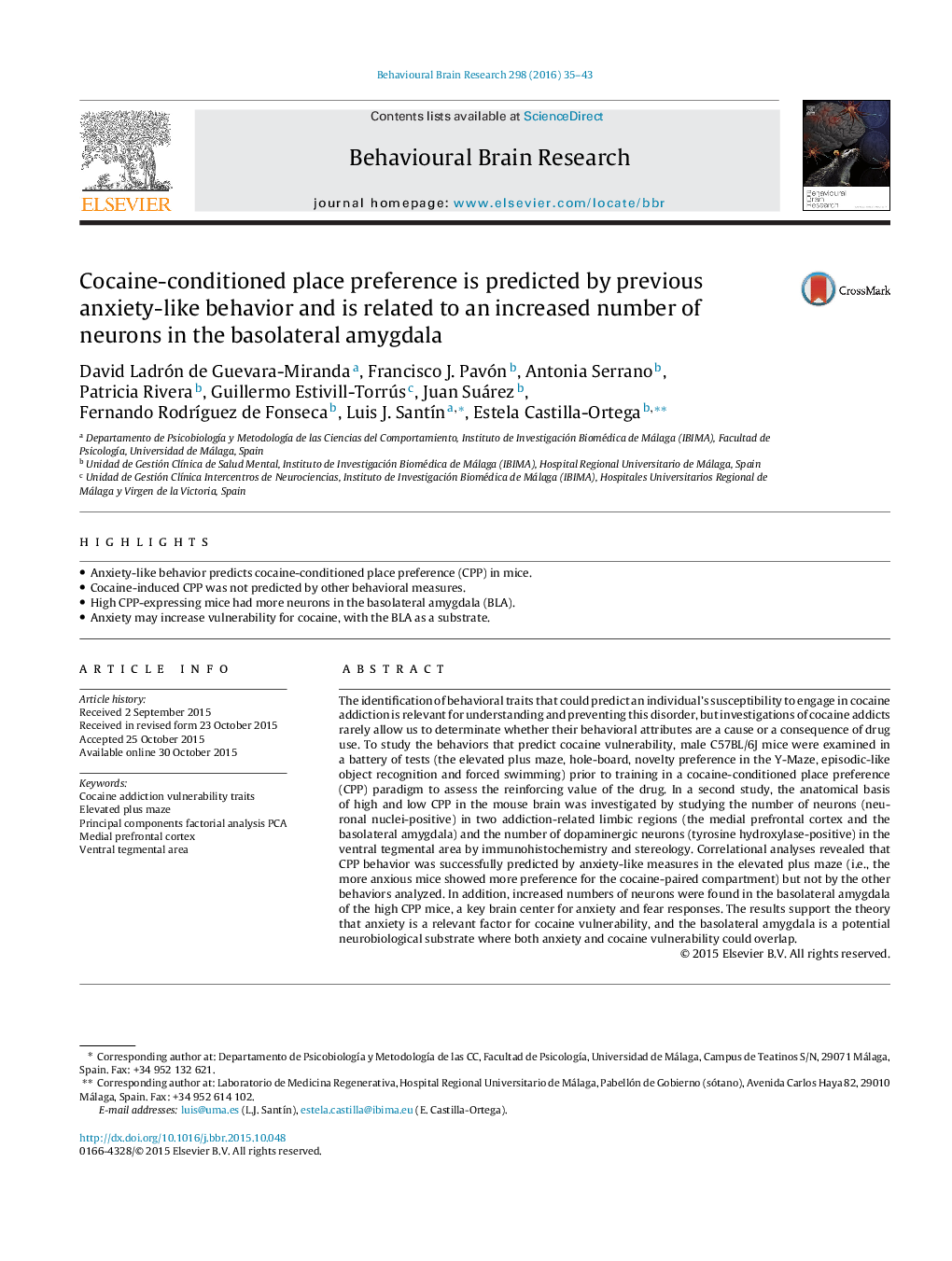| Article ID | Journal | Published Year | Pages | File Type |
|---|---|---|---|---|
| 6256258 | Behavioural Brain Research | 2016 | 9 Pages |
Abstract
The identification of behavioral traits that could predict an individual's susceptibility to engage in cocaine addiction is relevant for understanding and preventing this disorder, but investigations of cocaine addicts rarely allow us to determinate whether their behavioral attributes are a cause or a consequence of drug use. To study the behaviors that predict cocaine vulnerability, male C57BL/6J mice were examined in a battery of tests (the elevated plus maze, hole-board, novelty preference in the Y-Maze, episodic-like object recognition and forced swimming) prior to training in a cocaine-conditioned place preference (CPP) paradigm to assess the reinforcing value of the drug. In a second study, the anatomical basis of high and low CPP in the mouse brain was investigated by studying the number of neurons (neuronal nuclei-positive) in two addiction-related limbic regions (the medial prefrontal cortex and the basolateral amygdala) and the number of dopaminergic neurons (tyrosine hydroxylase-positive) in the ventral tegmental area by immunohistochemistry and stereology. Correlational analyses revealed that CPP behavior was successfully predicted by anxiety-like measures in the elevated plus maze (i.e., the more anxious mice showed more preference for the cocaine-paired compartment) but not by the other behaviors analyzed. In addition, increased numbers of neurons were found in the basolateral amygdala of the high CPP mice, a key brain center for anxiety and fear responses. The results support the theory that anxiety is a relevant factor for cocaine vulnerability, and the basolateral amygdala is a potential neurobiological substrate where both anxiety and cocaine vulnerability could overlap.
Related Topics
Life Sciences
Neuroscience
Behavioral Neuroscience
Authors
David Ladrón de Guevara-Miranda, Francisco J. Pavón, Antonia Serrano, Patricia Rivera, Guillermo Estivill-Torrús, Juan Suárez, Fernando RodrÃguez de Fonseca, Luis J. SantÃn, Estela Castilla-Ortega,
